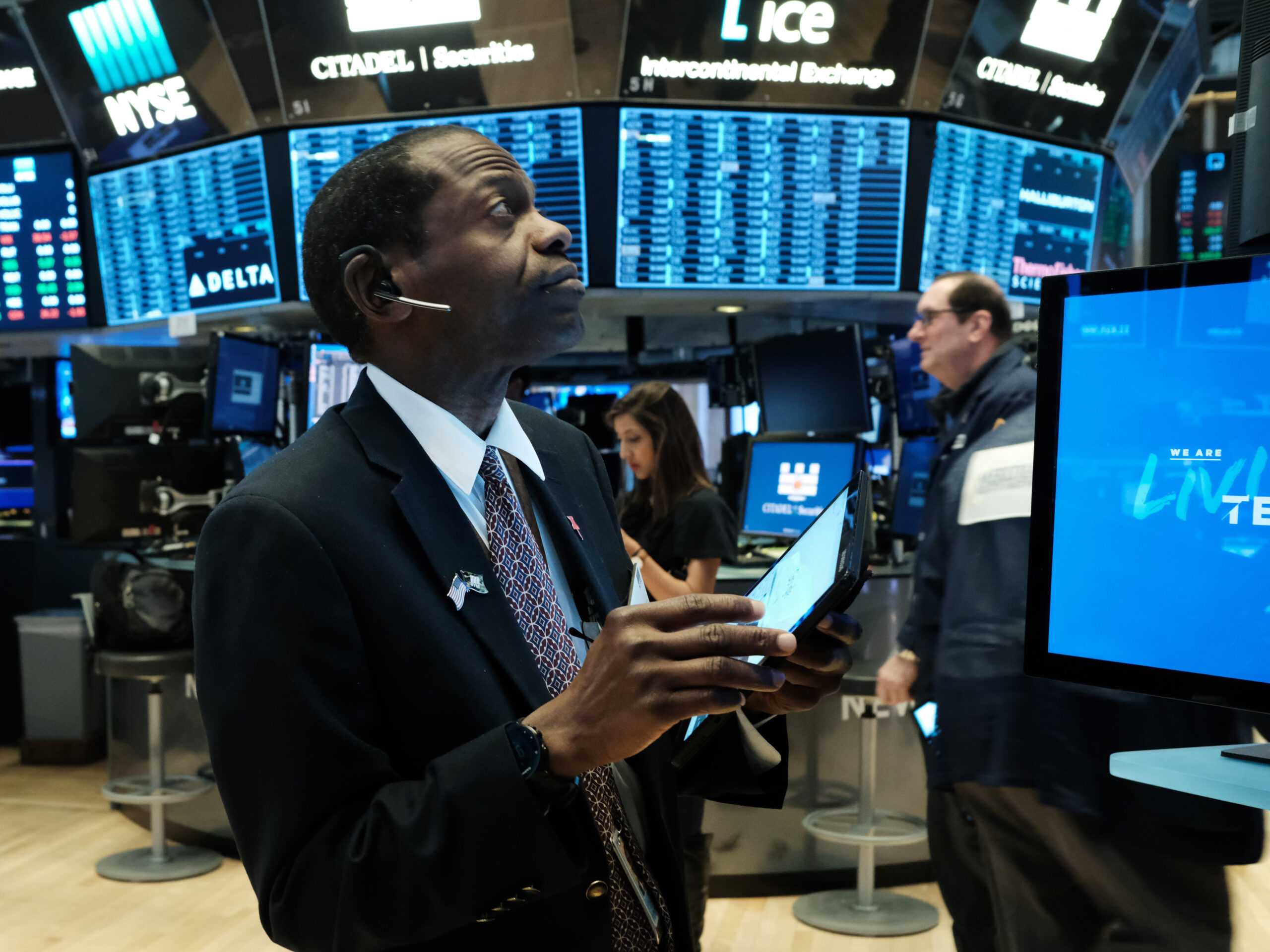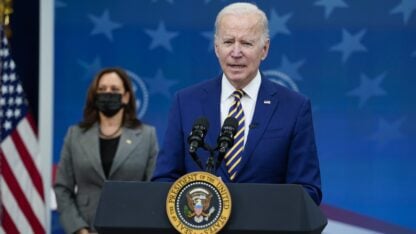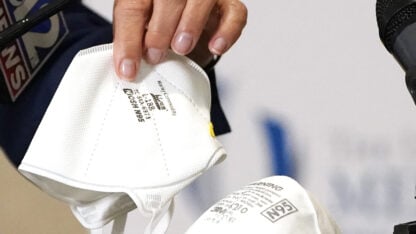Fed Cuts Interest Rates In Emergency Response To Coronavirus

U.S. stock indexes rose sharply on Monday in anticipation of the Federal Reserve’s interest rate cut.
Spencer Platt / Getty Images
Updated at 1:26 p.m. ET
Federal Reserve officials have cut a key interest rate by a half percentage point in an emergency attempt to shore up the economy at a time when the coronavirus threatens to slow growth.
But the move failed to mollify nervous investors on Wall Street, and stocks were down sharply again by the middle of the day. The Dow Jones Industrial Average was down more than 600 points, or 2.3%, in early afternoon trading.
The cut was the largest by the central bank since the 2008 financial crisis and it came as the Fed faced growing pressure to address the impact of the spreading epidemic on the global economy.
“The fundamentals of the U.S. economy remain strong. However, the coronavirus poses evolving risks to economic activity,” the central bank said in a statement Tuesday morning.
Don’t see the graphic above? Click here.
The Fed cut its target for the federal funds rate to a range of 1% to 1.25%. The move should lower the cost of borrowing, including for credit cards, auto loans and mortgages.
The Fed’s decision to cut rates was unanimous.
“We saw a risk to the outlook for the economy and chose to act,” Fed Chairman Jerome Powell told reporters. “Over the course of the last couple of weeks, we’ve seen a broader spread of the virus. We’ve seen it begin to spread a bit in the United States. But for us what really matters of course is not the epidemiology but the risk to the economy.”
But some economists said the move would do little to address the real problem facing the economy right now: Fear of the virus is causing many people to stay home, shutting down factory production, hurting retail sales and reducing travel.
Bernard Baumohl, chief global economist at the Economic Outlook Group, compared the Fed’s move to “putting a Band-Aid on an arm to cure a headache.”
“One is hard-pressed to see how precisely this easing in monetary policy will effectively counter fears of getting ill from this pathogen,” he wrote.
An extended outbreak will stifle demand throughout the economy as people avoid activities that could expose them to the virus, according to Tendayi Kapfidze, chief economist at LendingTree.
“What’s far less clear is whether a rate cut actually does anything to alleviate that demand shock,” he said.
Powell acknowledged that a rate cut is only one part of the response required by the outbreak and that primary responsibility will rest with doctors, nurses and public health officials.
“We do recognize that a rate cut will not reduce the rate of infection,” Powell said. “It won’t fix a broken supply chain. We get that. We don’t think we have all the answers. But we do believe that our action will provide a meaningful boost to the economy.”
Last week, stock prices had their worst week since the 2008 financial crisis, with the Dow Jones Industrial Average falling by 12.5%, although it recouped part of its losses on Monday.
The Fed left open the possibility of further rate cuts down the line, saying it was monitoring developments and would act as needed to shore up growth.
Powell said that while fallout from the epidemic has yet to show up in most economic statistics, anecdotal reports hint at what’s to come.
An extended outbreak will stifle demand throughout the economy as people avoid activities that could expose them to the virus, according to Tendayi Kapfidze, chief economist at LendingTree. “What’s far less clear is whether a rate cut actually does anything to alleviate that demand shock.”
The extent of the shock to the economy will depend on the duration of the virus and the extent to which businesses and consumers curtail spending in response to the outbreak.
Goldman Sachs is predicting the U.S. economy will barely skirt a recession, but it has lowered its growth forecast to 0.9% in the first quarter and zero in the second quarter
9(MDAxODM0MDY4MDEyMTY4NDA3MzI3YjkzMw004))








